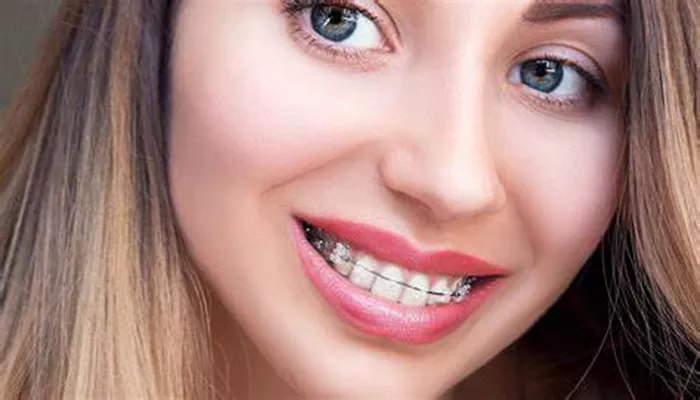Orthodontic treatment is a specialized branch of dentistry focused on diagnosing, preventing, and correcting misaligned teeth and jaws. This article aims to provide an in-depth understanding of the representative treatments within orthodontics, particularly focusing on braces, which are the most recognized form of orthodontic intervention.
What Is Orthodontic Treatment?
Orthodontic treatment involves the use of various appliances to correct dental irregularities. These irregularities can include overcrowded teeth, gaps between teeth, overbites, underbites, and other alignment issues. The primary goal of orthodontics is to achieve a healthy bite and a straight smile, which can enhance both function and aesthetics.
The process typically begins with a thorough examination by an orthodontist, who may take X-rays, photographs, and impressions of the teeth to develop a personalized treatment plan. The treatment can vary in duration and complexity depending on the individual’s specific needs.
The Representative Treatment: Braces
Among the various orthodontic treatments available, braces stand out as the most representative and widely used method for correcting misaligned teeth. Braces apply continuous pressure over time to gradually shift teeth into their desired positions.
SEE ALSO: How to Remove Orthodontic Wires: A Step-by-Step Guide
Types of Braces
Braces come in several types, each designed to cater to different orthodontic needs and patient preferences:
Metal Braces: These are the traditional braces made from stainless steel. They consist of metal brackets bonded to each tooth and connected by wires. Metal braces are highly effective for a broad range of dental issues and are often the most affordable option.
Ceramic Braces: Similar in structure to metal braces but made from clear or tooth-colored materials, ceramic braces are less noticeable.
They are popular among adults and teens who prefer a more discreet option.
Lingual Braces: These braces are attached to the back of the teeth instead of the front, making them virtually invisible from the outside.
While they offer aesthetic advantages, they can be more challenging to clean and may require a longer adjustment period.
Self-Ligating Braces: These braces use a specialized clip system instead of elastic bands to hold the wire in place. This design can reduce friction and allow for quicker adjustments, often leading to shorter treatment times.
Invisalign: A modern alternative to traditional braces, Invisalign uses a series of clear plastic aligners that are custom-made for each patient. They are removable and nearly invisible, making them ideal for those seeking a discreet treatment option.
How Do Braces Work?
Braces work by applying gentle pressure to teeth over time. The components include:
Brackets: Small squares bonded directly to each tooth.
Archwire: A thin metal wire that connects all brackets together.
Ligatures: Tiny rubber bands that hold the archwire in place (in traditional metal braces).
As adjustments are made during regular visits to the orthodontist, the archwire is tightened or replaced, gradually shifting the teeth into their correct positions.
The Orthodontic Process
Initial Consultation: The orthodontist evaluates the patient’s dental condition and discusses treatment options.
Treatment Plan Development: After diagnostic records are taken, a personalized treatment plan is created outlining the type of braces needed and estimated duration.
Application of Braces: The selected type of braces is applied during an office visit. This process typically takes about one to two hours.
Regular Adjustments: Patients return for periodic adjustments every 4-8 weeks. During these visits, the orthodontist will tighten or change wires as necessary.
Completion of Treatment: Once teeth have moved into their desired positions, braces are removed.
Retention Phase: After removal, patients usually need to wear retainers to maintain their new smile while surrounding tissues stabilize.
Benefits of Orthodontic Treatment
Orthodontic treatment offers numerous benefits beyond just aesthetics:
Improved Oral Health: Straight teeth are easier to clean and maintain, reducing the risk of cavities and gum disease.
Enhanced Functionality: Properly aligned teeth improve chewing efficiency and can alleviate issues related to jaw alignment.
Boosted Self-Esteem: Many patients experience increased confidence in their appearance after completing orthodontic treatment.
Considerations Before Starting Treatment
Before beginning orthodontic treatment with braces or any other method, several factors should be considered:
Age: While many people associate braces with children and teenagers, adults can also benefit from orthodontic treatment at any age.
Duration of Treatment: Depending on individual circumstances, treatments can last anywhere from several months to a few years.
Cost: Orthodontic treatments can vary significantly in cost based on complexity and type of appliance used. Insurance coverage may also influence out-of-pocket expenses.
Lifestyle Adjustments: Patients may need to modify their diets (avoiding hard or sticky foods) and maintain diligent oral hygiene practices during treatment.
Conclusion
Orthodontic treatments play a crucial role in enhancing dental health and aesthetics through various methods, with braces being the most representative form of treatment. Understanding the types of braces available, how they work, and their benefits can help individuals make informed decisions about their orthodontic care.
Related topics:

